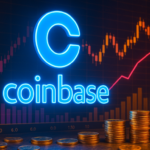Recent financial forecasts and assessments have propelled investors to monitor developments in Nvidia (NASDAQ:NVDA), Sunrun, and Eli Lilly (NYSE:LLY) closely. The anticipated resolution of a government shutdown has instilled a sense of optimism within the markets, influencing both investor sentiment and stock analyses. Consequently, companies with potential for notable growth and returns are receiving heightened attention from experts.
Nvidia has consistently been a focus due to its significant role in accelerated computing and artificial intelligence technology. Previously, the company was primarily associated with gaming and graphics, but recent strategies have shifted its trajectory towards high-computational fields such as healthcare. Citigroup analysts are forecasting Nvidia to reach sales exceeding analyst expectations, predicting $56.8 billion compared to the projected $54.6 billion. Furthermore, price target upgrades from firms like Bank of America and UBS reflect a strong belief in Nvidia’s strategic direction and future revenue, with UBS setting a new target of $235.
What’s in Store for Sunrun?
Sunrun is being perceived differently in the current financial landscape. Analysts at Guggenheim recently revised their recommendation, underscoring an investment potential in light of its current stock value. With a price target of $27, Sunrun is seen as a viable option for future capital returns by 2026. Past endorsements, such as those from Jefferies and BMO, already highlighted a belief in Sunrun’s capacity for cash generation and value to shareholders, setting various price targets that reflect growing confidence in the firm’s trajectory.
How will Eli Lilly Manage Medicare and Medicaid Price Reductions?
Eli Lilly has engaged in a significant agreement concerning the pricing structure for GLP-1 treatments. The company is preparing for an extensive adoption of its obesity-related medications, facilitated by Medicare and Medicaid price cuts scheduled for 2026. These changes are hoped to expand access to essential treatments for millions of older adults. In relation to the agreement, Eli Lilly announced that it will offer GLP-1 treatments at a reduced price of $245 per month. Additionally, some Medicare patients may experience costs as low as $50 per month.
Analysts at Leerink have placed Eli Lilly in a favorable position by upgrading its rating, anticipating that efforts to broaden obesity treatment access could significantly influence market presence and revenue growth. The firm’s outlook has changed dramatically due to the expected wave of treatment adoption led by increased Medicare and Medicaid access projected by 2027.
The analysis of these companies reveals distinct strategies driven by upcoming legislative changes, market trends, and sector advancements. Nvidia’s shift into diverse technological applications, Sunrun’s focus on financial returns, and Eli Lilly’s attention to healthcare accessibility highlight potential growth trajectories in distinct industries. Investors may find these strategic moves worth watching as each company adapts to market demands and regulatory changes.










